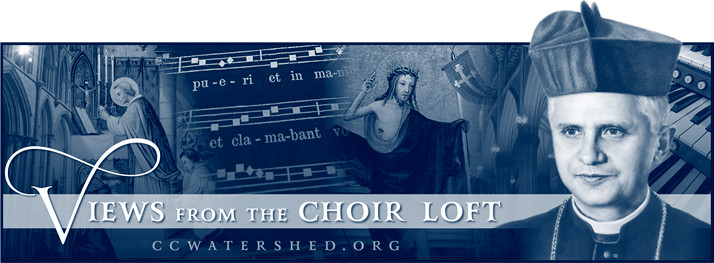
 HE FOLLOWING FOUR VOLUMES appear to be permanently out-of-print. Not even PaxBooks has them. Can anybody provide me some xerox copies of sample pages? Missale Romanum cum lectionibus ad usum fidelium (1977). In four volumes, all the prayers and readings for the whole year for use as a hand missal for the faithful. Musical settings include some chants for the Mass.
HE FOLLOWING FOUR VOLUMES appear to be permanently out-of-print. Not even PaxBooks has them. Can anybody provide me some xerox copies of sample pages? Missale Romanum cum lectionibus ad usum fidelium (1977). In four volumes, all the prayers and readings for the whole year for use as a hand missal for the faithful. Musical settings include some chants for the Mass.
UPDATE !!! This book is now available in PDF format. Click here.
Missale Romanum cum lectionibus ad usum fidelium. Vatican Press. 4 vols.
This is truly a splendid work, and finally some nine years after the appearance of the Missale Romanum (altar edition) of Paul VI, puts into the hands of the laity a portable Latin missal which (pace Archibshop Bugnini) contains everything said or read at Mass. To this extent, it resembles the pre-Vatican II missals which contained everything, either in Latin or in English, or, in the case of the Saint Andrew Missal, in both languages. The big difference between the present work and its predecessors, however, is the number of pages it takes to present the material. The comparable older missals ran to about 1300 pages; the new one comprises four volumes of about 2000 pages each. The increase in bulk is not solely due to the new cycle of readings; the new missal is arranged to provide the maximum convenience for the user.
Volume I contains the time of advent and Christmas as well as the time before lent. Volume II contains lent and paschaltime. Volume III has the Sundays numbered during the year from the sixth to the twenty-first. The remaining are in Volume IV. Each volume contains the ordinary of the Mass, together with the proper of the saints and the commons as well as all the ritual Masses and Masses for various necessities, votive Masses and Masses for the dead. The music for the Ordo Missae and other chants that are needed can be found also. Each volume contains the Ordo Missae, both cum and sine populo. The Masses proper to the time period for each volume include the readings, as of course do all the other Masses. In addition, each volume contains all of the Masses for the thirty-four Sundays per annum but without the readings. The reason for including all of the Masses except the readings is clearly indicated at the top of the pages containing the Mass where it states that on the weekdays through the year any one of the thirty-four Masses is able to be said according to the pastoral usefulness of the texts. The four volumes all contain all of the common Masses of the year, beginning with the dedication of a church and ending with the Commune sanctorum et sanctarum. The next sections of each contain the Missae rituales, Missae et orationes pro variis necessitatibus, Missae votivae and Missae defunctorum. An appendix, also appearing in each volume, repeats the appendix of the altar edition, with the blessing of holy water, specimen formulas for the Oratio universalis and some examples of the chants used in the Mass, i.e., for the introductory rites, one preface, and the parts of the eucharistic prayer which may be sung. They even include the pontifical blessing.
As will by now be obvious, the Vatican press has been extremely generous in its inclusions. Each volume, for example, contains not only the prefaces proper to the time it covers, but all of the other prefaces which could conceivably be used in that time. The advent volume, for instance, contains, in addition to the prefaces of advent, Christmas, etc., all of the votive and festal prefaces, even those of the Sacred Heart and the Holy Eucharist. The only omissions for this seasonal volume are the obvious prefaces de tempore which could not be used during the volume’s currency, e.g., Easter and Pentecost. It is difficult in a review to avoid overpraising the work. Its appearance is quite handsome, the “cheap” edition (about $80) being bound in brown vinyl, fully rubricated with a bright red ink, and equipped with six ribbons.
For any serious student of the Roman rite, this is an essential acquisition, and should put to rest the hoary concept that Latin is no longer a language of the Roman Church. — Harold Hughesdon

